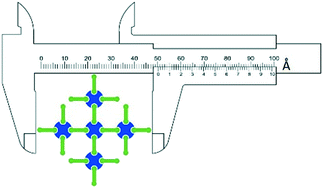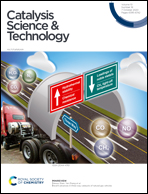Covalent structured catalytic materials containing single-atom metal sites with controllable spatial and chemical properties: concept and application†
Abstract
We report a simple and scalable concept for designing a family of covalently-bound materials wherein single-atom metal sites are dispersed with a high degree of spatial and chemical control. Our method is based on a “ring and linker” building block combination, with highly stable phthalocyanine macrocycles connected by a variety of linkers using amide bonds. This approach enables the design of solid materials with precise distances between the single-atom sites. It is also versatile, allowing for diverse combinations via “mix & match” options. We demonstrate the concept in the synthesis of nine different copper- or cobalt-containing polymers, as well as their application in the selective oxygen reduction reaction. Our results show a clear relation between linker length and activity, demonstrating the power of this simple synthetic approach.



 Please wait while we load your content...
Please wait while we load your content...